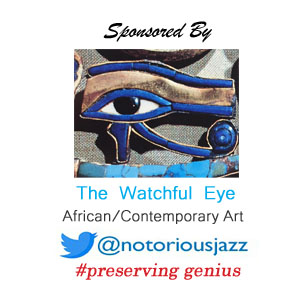
Daily Dose Of Jazz…
Ray Mckinney was born Raymond Patterson McKinney on June 20, 1931 in Detroit, Michigan. He was the fourth of ten children artistically gifted, and most of the children took music lessons from their mother. Starting on the Ocarina, he soon graduated to the piano, then the cello which he took to the instrument immediately. His father and English teacher encouraged him to write poetry and he became quite proficient.
During his high school years that Ray was first exposed to jazz, hearing Ella Fitzgerald with Chick Webb in 1939, also Erskine Hawkins and Jay McShann when he had Charlie Parker with him. Music in the neighborhood, there were bands made up of youngsters who played homemade instruments, such as, pails, brushes, spoons and it was where Ray learned that he only needed himself to make music.
The band director at Northwestern High School forced him to switch from cello to bass. Academically gifted, he was determined to be heard above the Northwestern band, he developed his technique. His passion for music consumed his time and he quit school in 1947 at age sixteen. He was spending time with like-minded students and other aspiring musicians from his west-side neighborhood, Maurice Wash, Claire Rockamore, Barry Harris, and Frank Foster. It was where he developed stamina, playing twelve, eighteen hours at a time. McKinney and Harris worked local jobs backing a vocal group in which Harris’ wife Christine was a member. This group recorded at least twenty titles for the New Song label in 1950.
Ray became a force to be reckoned with on the competitive Detroit scene and he worked with several Detroit piano stars. Though he liked bassists Alvin Jackson, Clarence Sherrill and Major “Mule” Holley, his major influences were Ray Brown, Oscar Pettiford, Tommy Potter and Dillon “Curly” Russell. He befriended Paul Chambers and his cousin Doug Watkins, because their playing impressed him, especially Paul’s bowing.
In 1956 he moved to New York City with harpist Dorothy Ashby’s group, however, the gig didn’t last long when Ray was fired after punching Ashby’s husband in the face during an argument. He would go on to work with Guy Warren, Barry Harris, Ben Webster, Edmund Hall, Max Roach, Walter Benton, Booker Little, Julian Priester, Coleman Hawkins, Mal Waldron, Eric Dolphy, Red Garland, Yusef Lateef, Andy Bey and spent a year with comic Nipsey Russell’s back-up band.
For a short time he experimented with heroin but by 1973 McKinney was clean and living in Oberlin, Ohio and with a new love interest before settling in San Diego, California in 1974. With not much jazz happening he took up a series of day jobs for the next four years while continuing to create poetry.
His precarious health and his lack of insurance caused his friends concern and made his last years were unsteady. He received a special Lifetime Achievement award during Baker’s Keyboard Lounge 70th anniversary celebration in 2004. It was one of his final public appearances. Bassist Ray McKinney passed away on August 3, 2004, aged 73 in San Diego.
More Posts: bandleader,bass,history,instrumental,jazz,music
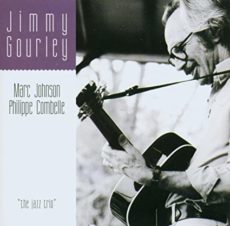
Daily Dose Of Jazz…
James Pasco Gourley, Jr. was born on June 9, 1926 in St. Louis, Missouri. He met saxophonist Lee Konitz in Chicago, Illinois when both were members of the same high school band, crediting Konitz with encouraging him to become a serious musician.
Jimmy’s father started the Monarch Conservatory of Music in Hammond, Indiana, and though he didn’t teach, he bought him his first guitar. Taken his first guitar classes at the school. He became interested in jazz while listening to the radio, enjoying in particular Nat King Cole. For his first professional experience as a performer, he dropped out of high school to play with a jazz band in Oklahoma City, Oklahoma.
From 1944 to 1946, Gourley served in the U.S. Navy then returned to Chicago, where he met guitarist Jimmy Raney and wanted to play like him. He worked in bars and clubs with Jackie Cain & Roy Kral, Anita O’Day, Sonny Stitt, and Gene Ammons. Through the G.I. Bill, he received tuition for three years to any college in the world.
By 1951, he spent the rest of his life in France, working with Henri Renaud, Lou Bennett, Kenny Clarke, Richard Galliano, Stéphane Grappelli, Bobby Jaspar, Eddy Louiss, Martial Solal, and Barney Wilen. He played with American musicians who were passing through, including Bob Brookmeyer, Clifford Brown, Stan Getz, Gigi Gryce, Roy Haynes, Bud Powell, Zoot Sims, Lucky Thompson, Lester Young and his friend Lee Konitz. Guitarist Jimmy Gourley passed away on December 7, 2008 in Villeneuve-Saint-Georges, France at the age of 82.
More Posts: bandleader,guitar,history,instrumental,jazz
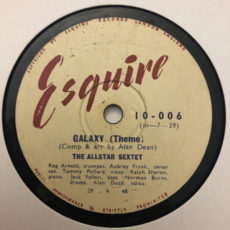
Daily Dose Of Jazz…
Aubrey Frank was born on June 3, 1921 in London, England. He started playing alto saxophone at fourteen, then switched to tenor the following year. HIs first gig was with Jack Harris, then joined the RAF but continued playing with Ambrose, Johnny Claes, Geraldo, Lew Stone, and George Evans. He was in the first Ted Heath band and the RAF Fighter Command Band. During World War II he played with Sam Donahue and Glenn Miller.
Leaving the RAF, he continued to work with Ambrose until 1947, as well as the Skyrockets and the Squadronnaires. From 1949 to 1954 a member of Jack Nathan’s band alongside Ronnie Scott and Harry Klein. He freelanced and became a staple on early British bebop dates where his adaptability allowed him to play in any type of band, from Dixieland to modern jazz.
He recorded with the George Shearing Sextet, Harry Hayes, Alan Dean All-Star Sextet and had a long career regarded as a first-class session musician but was a jazzman at heart. With the advent of bop, his style changed little, leading the Aubrey Frank Modern Music Sextet consisting of Hank Shaw or Wyatt Forbes, Harry Klein, Andy Denits, Stan Wasser, and Douggie Cooper. Tenor saxophonist Aubrey Frank passed away on his seventy-second birthday in 1993.
More Posts: bandleader,history,instrumental,jazz,music,saxophone
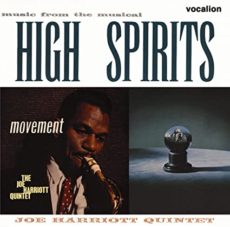
Daily Dose Of Jazz…
Shake Keane was born Ellsworth McGranahan Keane on May 30, 1927 in Kingstown, St. Vincent, West Indies into a family that loved music and books. He attended Kingstown Methodist School and St. Vincent Grammar School. He was taught to play the trumpet by his father Charles and gave his first public recital at the age of six. When he was 14 years old, Keane led a musical band made up of his brothers. In the 1940s, with his mother Dorcas working to raise six children, the teenager joined one of the island’s leading bands, Ted Lawrence and His Silvertone Orchestra.
During his early adulthood in St. Vincent, his principal interest was literature, rather than the music for which he would become better known. Dubbed “Shakespeare” by his school friends, on account of his love of prose and poetry. This nickname was subsequently shortened to “Shake”, which name he came to use throughout his adult life. He published two books of poetry in the early Fifties L’Oubili and Ixion, while still in St. Vincent.
Emigrating to Great Britain in 1952 he worked on BBC Radio’s Caribbean Voices, reading poetry and interviewing fellow writers and musicians. He also began playing the trumpet in London nightclubs, working in a number of styles including cabaret, highlife, soca, mento, calypso, and jazz. From 1959 he committed more fully to jazz, spending six years as a member of pioneering alto saxophonist Joe Harriott’s band. The group was the first in Europe and one of the first worldwide, to play free jazz, and Keane contributed mightily to the band’s artistic success, thanks to his fleet and powerful improvisatory skills on trumpet and flugelhorn.
He also made a small handful of records under his own name, but these were usually light jazz. In 1966 he left Britain to settle in Germany and became a featured soloist with the Kurt Edelhagen Radio Orchestra, and also joined the Kenny Clarke-Francy Boland Big Band.
Setting aside his musical career, he returned to St. Vincent in 1972 taking up a government position as director of culture, where he remained in the post until 1975. He then became an educator as his main profession, while continuing to write poetry. In the early 1980s, Shake moved to New York City, settling the Bedford-Stuyvesant section of Brooklyn which became his base but found a second home in Norway.
He returned full-time to music in 1989 when he rejoined Michael Garrick and his old bandmates Coleridge Goode and Bobby Orr for a tour in honor of Joe Harriott. In 1991 Keane appeared in a BBC Arena documentary with the Jamaican poet Linton Kwesi Johnson.
In the 1990s, he remained based in Brooklyn, but found a second home in Norway, where he worked most extensively. He contributed music to Norwegian television and stage productions for the next few years, also touring the country playing jazz. It was while preparing for one such tour that he became ill, and subsequently, trumpeter and poet Shake Keane passed away from stomach cancer on November 11, 1997 in Oslo, Norway.
More Posts: bandleader,flugelhorn,history,instrumental,jazz,music,trumpet
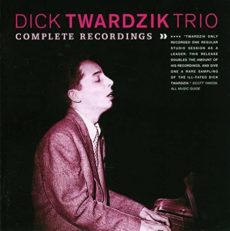
Daily Dose Of Jazz…
Dick Twardzik was born Richard Henryk Twardzik on April 30, 1931 in Danvers, Massachusetts. He trained in classical piano as a child and made his professional debut at the age of fourteen. He was taught by Margaret Chaloff, the mother of baritone saxophone player Serge Chaloff.
Twardzik recorded with Serge Chaloff and with Charlie Mariano. He worked with Charlie Parker on several occasions toward the end of Parker’s life. He played with Chet Baker and Lionel Hampton and recorded with Baker and Chaloff in 1954 and 1955.
It was during his teen years, that he became addicted to heroin. Bebop pianist Dick Twardzik who worked in Boston for most of his short career passed away from a heroin overdose while on tour with Chet Baker in Europe on October 21, 1955 in Paris, France. He was 24.
More Posts: bandleader,history,instrumental,jazz,music,piano


